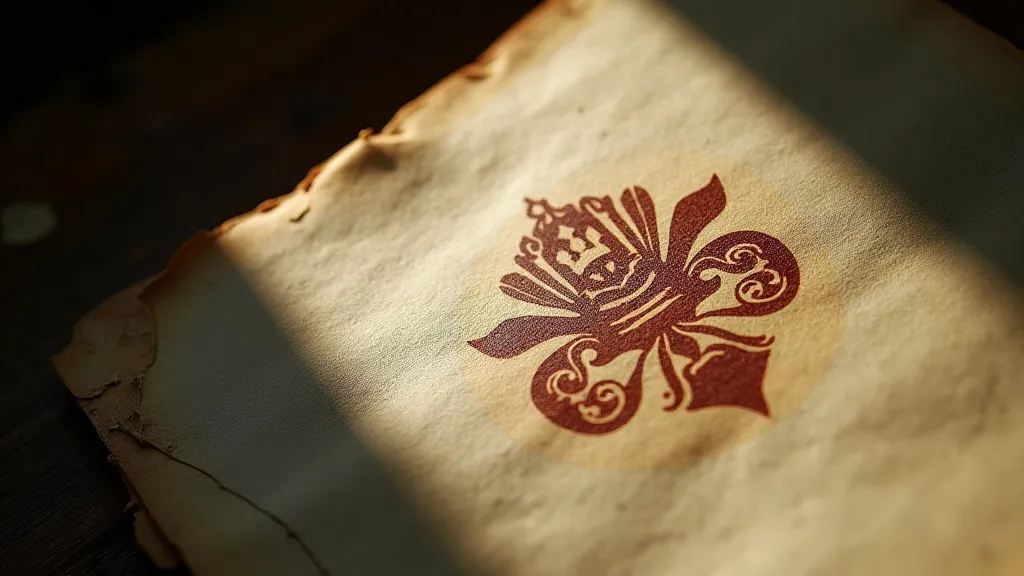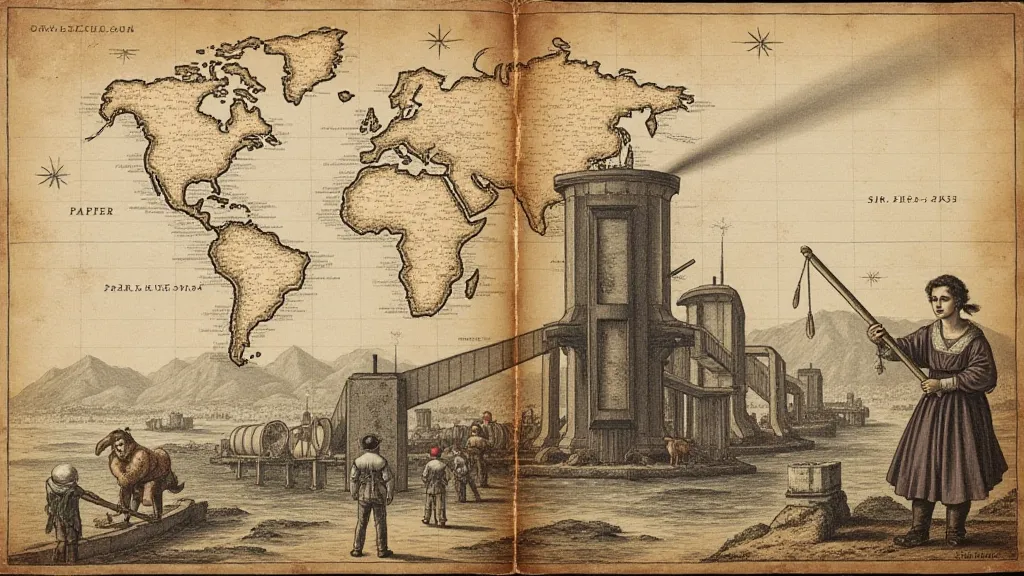Ephemeral Echoes: The Significance of Watermarks in Map Identification
There’s a quiet beauty to antique maps, a visual testament to an era when cartography was a meticulous blend of artistry, scientific observation, and the slow, deliberate hand of the craftsman. We’ve become so accustomed to the instant gratification of digital information that holding a centuries-old map, feeling the texture of the paper, and tracing the faded ink lines can be a profoundly moving experience. Beyond the elegant depictions of continents and coastlines lies a subtle but incredibly valuable clue to a map's origin and history: the watermark. These ghostly emblems, born from the papermaking process, are more than mere imperfections; they are whispers from the past, echoing the lives and industries that shaped the world we know.
I remember the first time I truly appreciated the significance of watermarks. I was assisting a seasoned map conservator, examining a fragile 17th-century Dutch sea chart. The map was heavily damaged, torn and stained, but the watermark—a stylized griffin perched on a castle—was remarkably clear. My mentor explained that this watermark was characteristic of a particular paper mill in Holland, established in the late 16th century. It instantly transformed the map from a generic piece of cartography into a document tied to a specific place and a specific time. Suddenly, the map felt alive, imbued with a personal history that transcended its purely geographical representation.
The Birth of a Mark: Understanding Paper Watermarks
So, how do watermarks come to be? During the manual production of paper, sheets of pulp were laid onto a screen and pressed to remove excess water. A floating metal device, called a dandy roll, was pressed against the forming sheet. This roll had a raised pattern – the watermark – which impressed itself onto the paper as it dried. The thicker the pulp at that point, the more visible the watermark becomes when the finished sheet is held up to the light. Different paper mills developed unique designs, often incorporating their initials, crests, or other identifying symbols. These watermarks served as a form of branding, guaranteeing the quality of their paper and distinguishing it from competitors.

Deciphering the Echoes: Identifying Common Watermarks
Identifying watermarks can be a challenging, yet incredibly rewarding, pursuit. It requires patience, a keen eye, and often, access to reference collections. Thankfully, numerous databases and catalogues document thousands of known watermarks, allowing researchers and collectors to compare the marks found on maps to those already recorded. Some watermarks are relatively common, appearing on maps produced across Europe and over extended periods. Others are far rarer, providing valuable clues to a map’s provenance and potentially indicating a high level of exclusivity.
The Netherlands, a major producer of paper during the 16th and 17th centuries, boasts a particularly rich legacy of watermarks. You’re likely to encounter marks featuring coats of arms, heraldic symbols, or stylized figures – often depicting merchants, animals, or historical figures. France and Germany also have numerous identifiable watermarks, each reflecting their respective papermaking traditions. Even smaller, less-known regions contributed to the global paper trade, leaving their mark – quite literally – on countless antique maps.
Beyond Origin: Watermarks and Historical Context
The significance of watermarks extends far beyond simply identifying the paper mill. They offer valuable insights into the broader historical context of a map's production. For example, the presence of a watermark associated with a mill known to supply paper to the Dutch East India Company can suggest that a map was intended for use in maritime navigation or trade. The rarity of a particular watermark might indicate that the map was printed in a small edition, intended for a select clientele. Examining the distribution of a watermark across different maps can even shed light on trade routes and the flow of information in the early modern period.
Consider the story a watermark can tell: A map made on paper from a mill active only for a brief period, perhaps destroyed by fire or overtaken by changing economic conditions. It's a tangible link to a vanished industry, a fleeting moment in time preserved within the fragile fibers of the paper.

The Conservator’s Perspective: Watermarks and Restoration
As an antique map restoration specialist, I find watermarks to be incredibly useful in assessing the condition and authenticity of a map. Damage to a watermark can sometimes reveal clues about the map’s history – perhaps it was folded in a particular way, causing the paper to crease and distort the mark. Conversely, a remarkably clear watermark on a map that is otherwise severely damaged suggests that the paper was of exceptionally high quality, indicating careful production and potentially influencing restoration techniques.
When restoring a map with a significant watermark, I take great care to preserve its integrity. Gentle cleaning methods are employed to remove surface dirt and stains without damaging the delicate paper fibers. Repairs are undertaken with archival-quality materials, ensuring that the map remains stable and legible for generations to come. The watermark, that ethereal signature of the past, is always treated with the utmost respect.
A Continuing Legacy: Resources for Identification
For those interested in exploring the world of watermarks, several excellent resources are available. The Watermark Collector’s Society (WCS) maintains a comprehensive database and offers workshops and lectures for enthusiasts. Numerous libraries and archives hold collections of watermark catalogues and reference materials. Online databases, while constantly evolving, offer increasingly detailed information on a wide range of watermarks.

The study of watermarks is more than just an academic exercise; it’s a journey into the heart of history. It’s a chance to connect with the individuals who crafted these fragile documents, to appreciate the ingenuity and artistry of the past, and to preserve these ephemeral echoes for future generations. Each watermark is a whisper, waiting to be heard, a testament to the enduring power of paper and the enduring human desire to leave our mark on the world.





